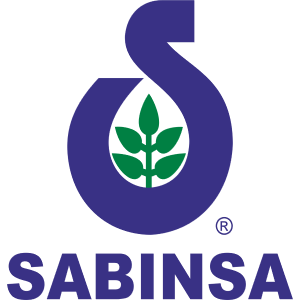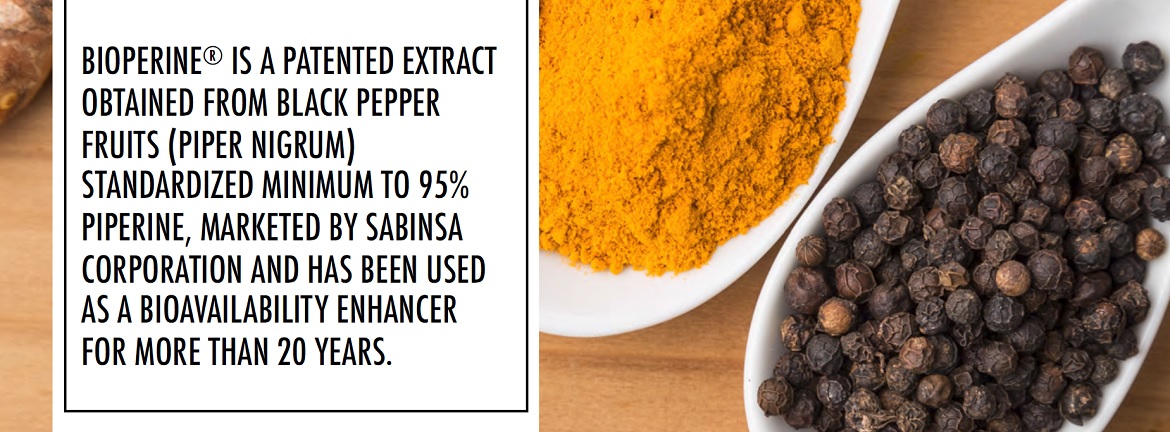Absorption of a pharmacological agent through the gut is a very important issue, especially when it has poor oral bioavailability, prolonged therapeutic use, and is expensive. Such agents remain sub-therapeutic because a major portion of the dose never reaches the plasma or exerts its pharmacological effect unless and until very large doses are given, which could possibly lead to serious side effects. Any significant improvement in bioavailability results in lowering the dose and/or the frequency of administration.
However, curcumin undergoes biotransformation in the GI tract. In an elegant study, Metzler et.al., have reported that "if curcumin has indeed effects outside the gastrointestinal tract, such effects may be due to the reductive metabolites of curcumin formed in the intestinal epithelium, i.e. hexahydro-curcumin and octahydro-curcumin."1 Therefore, any physical efforts to modify curcumin solubility with excipients such as phospholipids, turmerones, cyclodextrins etc, may not serve any additional therapeutic benefit including bioavailability. Only a few scientists have understood this biotransformation of curcumin and termed curcumin as a "Prodrug."2 We, at Sabinsa call it a "ProNutrient." Furthermore, such addition of excipents, though could improve solubility, it can result in the inadequate bioactivation of curcuminoids in the body and that can cause inconsistent clinical results.
BioPerine® is a patented extract obtained from black pepper fruits (Piper nigrum) standardized minimum to 95% Piperine, marketed by Sabinsa Corporation and has been used as a bioavailability enhancer for more than 20 years. BioPerine® has the remarkable ability to increase the bioavailability of co-administered nutrients. Different mechanisms of bio-enhancing activity of BioPerine® have been proposed:
- BioPerine® modulates the enzymes responsible for metabolizing nutritional substances
- It stimulates the activity of amino-acid transporters in the intestinal lining
- It inhibits p-glycoprotein, the 'pump' protein that removes substances from cells
- It decreases the intestinal production of glucuronic acid and reduces the activity of glucuronyl transferase enzyme thereby permitting more of the substances to enter the body in their active form
BioPerine® supplementation can turn a marginally effective nutritive substance into a highly effective one by increasing its bioavailability and intracellular residence time. A good example of this phenomenon is the use of BioPerine® to increase the bioavailability of curcumin, a supplement with broad beneficial health effects on joints, inflammatory disorders, activity against cancers, metabolic disorders and infections.
BioPerine® and Curcumin
There are a large number of studies that show the effective increase in the activity of curcumin when there is an addition of piperine to it. Following is only a sampling of such studies.
Co-administration of curcumin plus piperine decreases the levels of total cholesterol (TC), triglyceride (TG) and low-density lipoprotein cholesterol in the serum and liver, as well as increases the levels of faecal TC, TG and total bile acid, compared with administration of curcumin alone. Curcumin plus piperine also markedly increased the levels of high-density lipoprotein cholesterol.3 Furthermore, compared with administration of curcumin alone, curcumin plus piperine resulted in a significant up-regulation of the activity and gene expression of apolipoprotein AI (ApoAI), lecithin cholesterol acyltransferase (LCAT), cholesterol 7α-hydroxylase (CYP7A1), and low-density lipoprotein receptor (LDLR), leading to an increase in the transformation of cholesterol to bile acid, an increase in HDL-C levels and a reduction of LDL-C levels. Curcumin prevents the formation of cholesterol gallstones induced by high-fat diet in mice by improving bile flow and by activating the antioxidant enzymes of the liver. A recent study has shown that piperine, could increase curcumin bioavailability and makes curcumin more effective in preventing gallstones. 4 Curcumin in combination with BioPerine® has been shown to improve serum levels of adiponectin and leptin in patients with metabolic syndrome.5 In a double-blind cross over study, the effect of BioPerine® on plasma levels of Vitamin C co-administered with the cardiovascular drug, propranolol hydrochloride was evaluated. The bioavailability of vitamin C increased significantly in the presence of BioPerine® but the level of propranolol was not affected by the concurrent supplementation of 5 mg BioPerine®. These results suggest that co-administration of BioPerine® with a nutrient supplement increased the levels of supplement without affecting the drug levels.6
More than twenty clinical studies on the benefits of curcuminoids BioPerine® combination have been cited.7
BioPerine® is effective at as low as 5 mg/day
Badmaev, et al. (2000) found the nonspecific bio-enhancing effect of BioPerine® (5 mg) increase the plasma levels of supplemental coenzyme Q10 in a clinical study using a double-blind design. The relative bioavailability of 90 mg and 120 mg of coenzyme Q10 administered in a single-dose experiment or in separate experiments for 14 and 21 days with placebo or with 5 mg of BioPerine® was determined by comparing measured changes in plasma concentration. The results indicate that supplementation of 120 mg coenzyme Q10 with BioPerine® for 21 days produced approximately 30% greater, area under the plasma curve (AUC) than what was observed during supplementation with coenzyme Q10 plus placebo.8
Badmaev, et al. (1999) evaluated the effectiveness of BioPerine® (5 mg) to improve serum response of beta-carotene (15 mg) during oral supplementation using a double-blind, crossover study design. results indicated that supplementation with beta-carotene plus BioPerine® for 14 days produced a 60% greater increase in AUC of the serum beta-carotene as compared to beta-carotene plus placebo. The authors suggest that the improved serum response is due to thermogenic property(s) of BioPerine®.9
Also, a recent detailed study on rat model showed piperine co-administration with curcumin resulted in a selective reduction in the expression of UDP-glucuronyl transferase (UGT) and sulfotransferases (SULT) a novel mechanism by which piperine enhances the bioavailability of curcumin. The result of this study suggests that UGTs and SULTs transform curcumin into biologically inactive metabolites, by inhibiting these enzymes, piperine ensures bioavailability of curcumin.10
BioPerine® Safety
Black pepper contains about 5 to 9% piperine as per the Ph.D. dissertation (Page 153 of the Ph.D. dissertation submitted in 1984) by Scott Kindell Shore of Drexel University, Philadelphia, Pennsylvania, USA. It estimates the daily per capita consumption of piperine in the USA as 18.0 - 32.3 mg of piperine from the import data for the year 1978.11 Hence it is a justifiable conclusion that per capita consumption of piperine from 1970s till date is in the range 18.0 - 32.3 mg or even higher.
Hence, over a period of 35 years or so, millions of people in the USA have consumed piperine in the range 18.0 mg - 32.3 mg per day. No serious adverse effects have been reported during this period because of chronic consumption of piperine in the range 18.0 - 32.3 mg/day. This data serves as sufficient and excellent evidence assuring the long-term safety of piperine.
It has been stated that piperine antagonizes the anti-diabetic action of curcumin (PLoS One. 2014 9:e113993). But if one goes through this paper carefully, piperine was used in an extraordinarily high dose of 40mg/kg in rats (roughly will translate to 400 mg for a human) as against the recommended dose of 13.32 mg/day for humans.12 Hence, the conclusions derived from this paper on the putative effects of piperine may be termed totally irrational which are not relevant at the recommended dose of 5 mg BioPerine®.
In a commercial circular sent by Indena it has been averred that piperine has "failed to demonstrate a significant effect on the absorption of curcumin and curcuminoids in general" as per the research paper published in the J Funct. Foods, 2015; 14: 183-191. This paper has been misquoted as this study has evaluated sesamin, ferulic acid, naringenin and xanthohumol as adjuvants for curcumin. Piperine has not been studied in this paper.
The second paper quoted by Indena in their commercial circular states that piperine influences the expression of CYP3A4 through human PXR (Toxicology and Applied Pharmacology 2013; 272: 96-107). This paper states that piperine could influence the expression of CYP3A4 "when the absorption efficiency or first-pass effect of intestine and liver are not taken in to account" and "repeated multiple times." Here the physiological concentration of piperine having considerable influence on CYP3A4 is estimated to be 25 µM13. Further, the authors of this paper calculate and assume that piperine concentration in blood will reach 25µM, when 359 mg of pepper (equivalent to 18 to 32.3 mg of piperine if absorbed totally at 100 %) is consumed per day. Pharmacokinetic studies of piperine, however, have earlier reported that only 0.1-0.25% of the orally administered dose was detected in the liver 0.5-6 h after administration.14
At Sabinsa's recommended dose of 5 mg BioPerine®, the physiological concentrations are never likely to reach the level of 25 µM to inhibit the CYP3A4 enzymes . Thus the results of the study published in Toxicology and Applied Pharmacology 2013; 272: 96-107 have been incorrectly interpreted in the Indena commercial circular.
Why are Pepper associated Drug interactions not reported in the literature?
The following is the verbatim quote from page 289 of Toxicology and Applied Pharmacology, 2008; 230:283-289, "a progressive, time-dependent reversion of tissue P-gp to baseline levels could implicate changes in drug pharmacokinetics with time, whereas a rapid reversion would reduce the impact of dietary piperine on drug pharmacokinetics. The latter might well be the underlying reason for the scarcity of case reports on piperine - or pepper associated drug interactions in the clinic."15 The window of piperine induced drug interaction is very short to have a clinical implication.
In conclusion, it can be stated that BioPerine®, as a bioavailability enhancer inhibits glucuronidases in the intestine and thus increases the bioavailability of co-administered nutrients.
At the recommended dose of 5mg, not to exceed 13.32 mg/day, oral BioPerine®, administration is not likely to achieve a physiological concentration wherein it will interfere with the metabolism of drugs. Also, the reported short duration of bioavailability enhancement action of BioPerine® will further reduce any possibility of drug-nutrient interactions. Considering the numerous benefits brought about by curcuminoids-BioPerine® combination and in the absence of any adverse reactions reported, it can be safely said that the combination is effective without any side effects.









